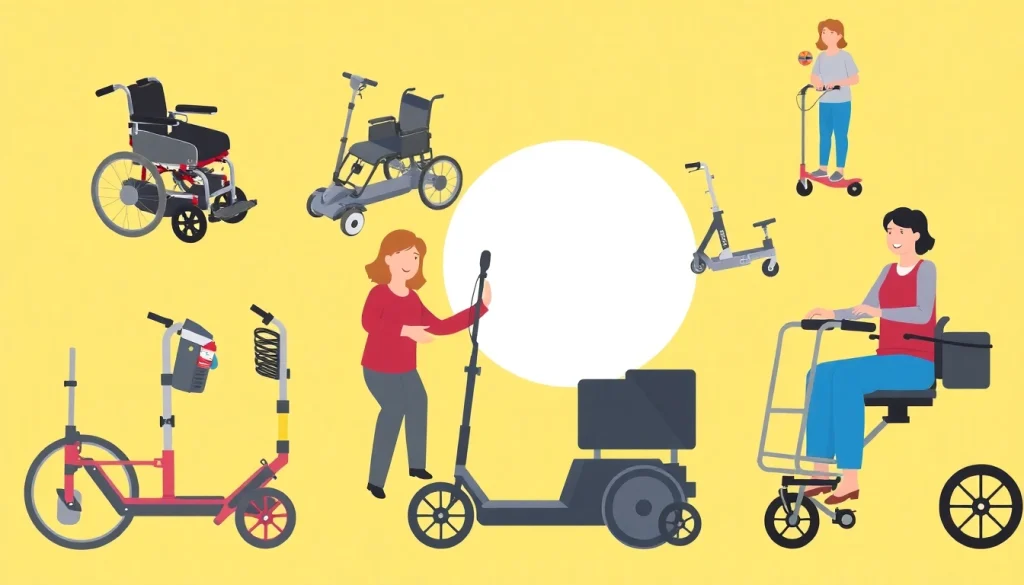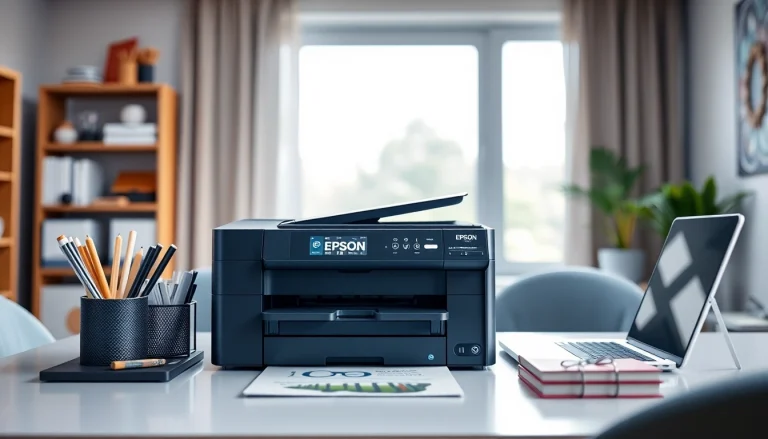
Understanding Mobility Equipment
Mobility equipment plays a pivotal role in enhancing the quality of life for those with physical limitations. From wheelchairs to walking aids, these tools are designed to promote independence and improve overall mobility. If you’re seeking to find suitable mobility equipment, understanding the various types available and their specific benefits is crucial in making informed decisions.
What Constitutes Mobility Equipment?
Mobility equipment encompasses a range of devices aimed at assisting individuals with movement challenges. This includes tools and aids that enhance mobility, such as wheelchairs, scooters, walking frames, and canes. Each piece of equipment serves a distinct purpose, catering to different mobility needs, from basic walking support to advanced transport solutions.
Common Types of Mobility Aids
There are several categories of mobility aids, each designed for specific needs:
- Wheelchairs: Available in manual and electric versions, wheelchairs provide essential support for individuals unable to walk independently.
- Mobility Scooters: These motorized units help individuals travel longer distances with ease, providing a comfortable alternative to walking.
- Walking Aids: Canes and walkers (also known as rollators) offer additional stability and balance for those requiring assistance while walking.
- Stair Lifts: Designed for multi-level homes, stair lifts transport individuals safely between floors without the need to navigate stairs.
- Bathroom Aids: Equipment such as grab bars and shower chairs provide support in slippery or challenging areas, enhancing safety.
Benefits of Using Mobility Equipment
The use of mobility equipment provides numerous benefits that extend beyond mere transportation options:
- Enhanced Independence: Many mobility aids allow users to manage daily activities with minimal assistance.
- Increased Safety: By providing support, mobility aids reduce the risk of falls and injuries.
- Improved Quality of Life: The ability to move independently can lead to increased social interaction and improved mental health.
- Access to Resources: Mobility equipment enables users to access environments that may otherwise be difficult to navigate, such as stores and public facilities.
Choosing the Right Mobility Equipment
Selecting the appropriate mobility aid may seem daunting, but assessing personal needs and understanding available options can simplify the process.
Assessing Your Mobility Needs
Start by evaluating the following factors:
- Current Mobility Level: Assess how well you can move independently. Consider both your strength and endurance.
- Environment: Identify where you will use the equipment most. Whether indoors, outdoors, or on public transportation, your environment influences your choice.
- Future Needs: Consider any potential changes to your mobility in the future. Opting for gear adaptable to evolving needs is a wise move.
Key Features to Consider
When choosing mobility equipment, keep the following features in mind:
- Adjustability: Many mobility aids come with adjustable heights or widths for personalized comfort.
- Weight Capacity: Ensure the equipment can support the user’s weight safely.
- Portability: If you travel often, consider how easily the equipment can be transported or stored.
- Ease of Use: Look for devices with intuitive features that are manageable for the user.
Consulting Professionals for Guidance
Engaging with healthcare providers, occupational therapists, or mobility specialists can provide invaluable insights into which aids might be most beneficial. They can assess physical limitations and recommend tailored solutions that align with personal requirements and lifestyles.
Top Mobility Equipment Options Available
Understanding your options is critical in selecting the best equipment to suit your needs. Below are some of the most common mobility aids available on the market today.
Wheelchairs: Manual vs. Electric
Wheelchairs come in two primary types: manual and electric.
- Manual Wheelchairs: These require the user or a caregiver to propel them. They are often lighter and more affordable, making them a common choice for those with upper body strength.
- Electric Wheelchairs: Perfect for individuals with limited physical strength, electric wheelchairs are powered by batteries, allowing for easier maneuverability over longer distances.
The choice between both largely depends on a user’s level of independence, budget, and intended use.
Mobility Scooters: Freedom and Flexibility
Mobility scooters provide a convenient solution for those who want to regain their independence while requiring support on longer outings. They vary in size, speed, and power, catering to a range of personal needs. Many scooters are designed for outdoor use, with robust tires and higher weight limits, while others are compact and suited for indoor spaces.
Walking Aids: Canes and Rollators
Walking aids can significantly improve balance and stability.
- Canes: Suitable for individuals who only need minimal support, canes come in various styles, including single-point and offset to provide better weight distribution.
- Rollators: Unlike traditional walkers, rollators feature wheels, making them easier to navigate. They often include a seat for resting and a basket for carrying items.
Maintaining and Caring for Your Mobility Equipment
Proper maintenance of mobility equipment ensures longevity and reliable performance. Regular care can prevent malfunctions and ensure that users receive optimal support.
Regular Maintenance Tips
Whether you own a wheelchair, scooter, or walking aid, establishing a maintenance routine is essential:
- Check for Wear and Tear: Regularly inspect the wheels, brakes, and upholstery for any signs of damage.
- Clean Thoroughly: Regular cleaning prevents dirt buildup and allows for smoother operation, particularly for electric models.
- Battery Care: For electric mobility aids, follow the manufacturer’s guidelines on battery management to ensure longevity and reliability.
Importance of Safety Checks
Conducting safety checks should be a priority. This should include testing brakes, ensuring that all parts are securely attached, and verifying that the device functions as intended. Performing these checks before each use, particularly for electric scooters and wheelchairs, enhances safety and performance.
Long-term Storage Solutions
For individuals who may not require their mobility equipment every day, proper storage is essential to prevent damage:
- Clean Before Storing: Always clean your equipment before storage to prevent dirt and moisture from causing damage over time.
- Choose Appropriate Storage Conditions: Store equipment in a cool, dry place to avoid rusting or moisture-related issues.
- Regular Checks During Storage: Occasionally checking on your equipment ensures that it remains in good condition for when it’s needed again.
Real-Life Impact of Mobility Equipment
Many individuals can attest to the positive impact that mobility equipment has had on their lives. These aids not only provide physical support but also contribute to emotional and social well-being.
Case Studies: Success Stories
Consider the story of John, a veteran who lost mobility due to an injury. After transitioning to an electric wheelchair, he reported feeling a renewed sense of freedom. John is now able to participate in community events and enjoy outings with his family, which would have been impossible without his mobility aid.
Likewise, Mary, a retiree with arthritis, found relief by using a rollator. This allowed her to take strolls in the park with friends and maintain her social life, significantly reducing feelings of isolation.
Improving Quality of Life Through Mobility
Mobility equipment enhances individuals’ ability to socialize, engage in activities they love, and maintain independence. These devices are essential in creating opportunities for individuals to lead fulfilling and active lifestyles.
Community Support and Resources
Numerous organizations and resources are available to support individuals seeking mobility aids. From local support groups to online forums, sharing experiences and receiving advice can be incredibly beneficial. Furthermore, many communities have resources for loans or rentals of mobility equipment, providing access without significant financial strain.





